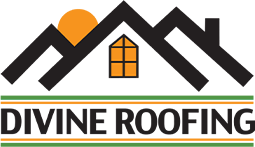There’s something whimsical about patches of plush green moss on a cottage roof. Because moss evokes these fairy tale thoughts, it can be easy to forget that it is one of the quickest ways to degrade your roof’s shingles—shortening the lifespan of your roof.
The abundance of rain and snow recently spells moist conditions for your roof. This moisture, in combination with shaded areas, is the ultimate moss and algae growing ground. If you’ve noticed moss on your roof, you will want to work quickly because, if left unchecked, moss and algae can grow rapidly.
While the effects of moss are seen most drastically in wood and asphalt, it can impact clay and concrete roofing materials as well. This is due to the way moss spreads. Starting as a thin layer, moss will expand and grow under and between shingles—exposing your roofing structure to unwanted moisture and leading to potential leaks and rot. Moss will also act as a sponge, storing water to keep these areas damper for longer.
Cleaning Your Roof
When DIYing anything on your roof, safety needs to be your number-one priority—safety for both yourself and your roof. Any time someone goes on your roof, you are risking cracks to your shingles, so it is important to have a plan of attack before setting foot up there. Plan your roof cleaning for an overcast day to prevent any cleaner from drying out too quickly before it has a chance to work its magic.
The last thing to be wary of before you get to work is how forceful cleaning will affect your roof. Avoid rigorous scrubbing and pressure washers because, while it might seem to be a faster solution, this amount of force will actually encourage shingle damage by cracking and stripping your shingles.
There are two steps to removing moss from a roof. For the early stages of moss growth, you might be able to remove the problem without any chemical treatment. However, if growth remains after step one, you will need to apply a cleaning solution.
Step 1: Hose and Brush
Mossy areas are incredibly slick, so carefully step around these areas on your roof to get above the growth. From there, begin by spraying water down the roof—again, making sure to avoid too much water pressure. A garden hose with a spray nozzle normally works well.
Starting at the highest point of moss on your roof, use a long-handled, soft-bristled brush to begin gently removing the growth. Work in small sections at a time and remember to avoid scraping too aggressively, as this could rip or crack your shingles.
If, after this cleaning process, you still have moss, you might need to employ a cleaning solution.
Step 2: Cleaning Solution
There are a variety of available roof cleaners on the market, some more chemical-dependent than others. No matter the chemical makeup of the cleaner, make sure you protect yourself and the plant life around your home. Purchase protective eye and hand-wear, and cover any foliage or sensitive decking directly underneath your roof with plastic sheeting before getting started.
After thoroughly reading the manufacturer’s directions on the cleaning solution, apply an even layer to your roof and allow the cleaner to sit for about 20 minutes. Use a garden hose to gently remove the cleaner and dead moss from your roof.
When the dust (moss) has settled, give your roof a quick evaluation. If there are missing, cracking, or lifting shingles, you might need to contact a professional. The pros at Divine Roofing, Inc. will provide a free estimate and inspection, and offer recommendations for roof repair that fit your budget.
Call our Colorado Springs office today at (719) 497-1005 or contact us online.


